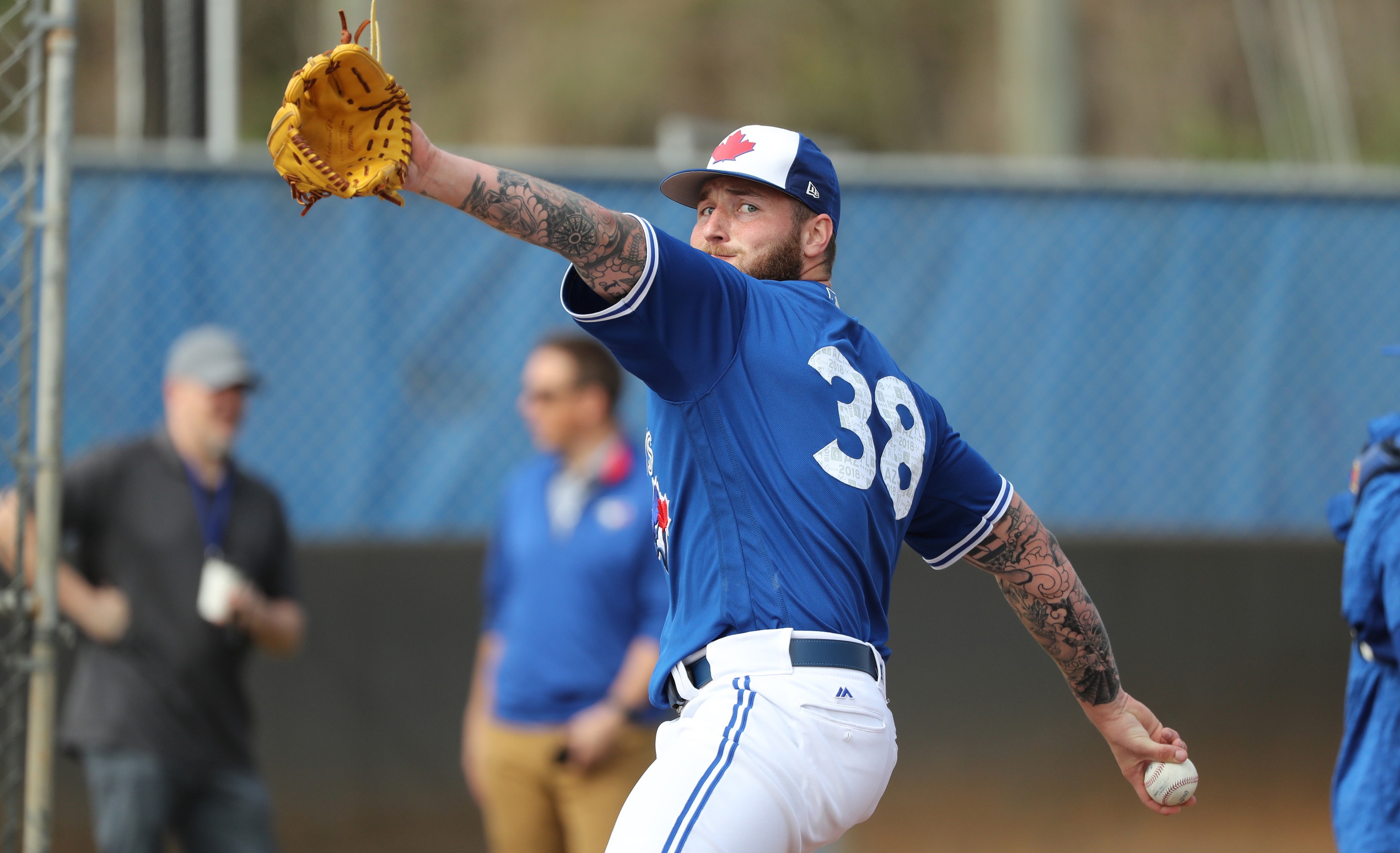BUFFALO – It was June 27th, 2018, when Sean Reid-Foley’s friend, left-handed pitcher Ryan Borucki, got the opportunity every young ball player works so hard to get – the call to the big club. Reid-Foley was elated for the Jays’ lefty because of the challenging journey Borucki had travelled. In his own words, he “has the utmost respect” for him. And every time his former Buffalo teammate took the mound Reid-Foley and other Bisons players took the time to cheer him on.
As John Lott of the Athletic wrote Borucki’s influence both on and off the field impacted Reid-Foley and certainly have been part of the turning point of his performance this season.
“I have been part of his journey in many different places, you almost feel a part of it,” said Reid-Foley. “Hearing his conversations on how he pitches and him asking me how I pitch. It is really nice to see someone young up there and doing what he is doing.”
Reid-Foley, born in Guam, was drafted in 2014 in the second round, 49th overall. His fastball has always been his most impressive pitch. It can reach 97 mph, but typically sits around 92-95 mph. As MLB.com notes “his deceptive delivery and arm action make him particularly tough on right-handed hitters.”
Over the years, his pitching role models have ranged from Pedro Martinez and Roger Clemens to Corey Kluber and Chris Sale. They are all known for their “bulldog” mentality and ability to dominate the opposition. But what Reid-Foley admires most is that “they all want to compete so much.”
But in order to be able to compete to their level he needed to have secondary pitches that could compliment his electric fastball. Besides the slider he added a curveball and change up over the last few seasons.
“I told them ‘I am going to try a curveball and add it to the arsenal’. They weren’t very….I wouldn’t say happy.”
Actually the curveball was added when he was messing around with his brother in the offseason following the 2015 season. Reid-Foley had a slider and his brother, David a prospect for the Los Angeles Dodgers, had a curveball. They decided to try throwing each other’s offspeed pitch. When Reid-Foley whipped off a few curveballs, his brother said you should throw this in the next season. Reid-Foley did just that. He threw it in the first bullpen session of the 2016 spring training.
“Everyone was ‘woah what is going on?’ I told them ‘I am going to try a curveball and add it to the arsenal’. They weren’t very….I wouldn’t say happy.” Why? They felt he was still too young; at the time he was 20 years old. But Reid-Foley kept it in his arsenal. Today, two and half seasons later , the development of his curveball has surpassed his slider, which was originally considered above-average by many scouts.
On the other hand, the changeup has taken longer to develop and led to some of the struggles he experienced last year in AA New Hampshire. That season that saw Reid-Foley take a step back in every major category: He posted an ERA of 5.09, an increase in BB/9 (3.60) and a decrease in K/9 (8.28).
“Last year was a big year for my changeup. I threw it a lot, kind of got hurt on it, but I had to learn when to throw it and when not to throw it. This contributed to last year’s struggles but it has definitely helped me out this year.”
When talking about the 2017 season, Reid-Foley doesn’t hold anything back – he knows it was a struggle. But what it did do is teach him a lot about himself and the importance of being able to figure out how to get out of tough situations.
“You learn who you are and if you ever get into a bind in the future you know how to get out of it,” said the 22 year old righthander. “You gotta try to get better everyday and have fun with it. Just getting better everyday with the pitches and the arsenal, making sure they are in tip top shape”
Beyond the lessons from last year’s difficult season, the further development of his changeup, and the conversations with Borucki, it was the tutelage of pitching coaches Bob Stanley and Vince Horsman that helped contribute to Reid-Foley’s turnaround this season. Using video from 2016 when the young hurler was in Dunedin, they changed some simple things in his delivery – a delivery that can be deceptive to hitters, but also has a tendency to give him below average control.
This season has seen a return to his numbers of the 2016 season. A season in which he was ranked 2nd among the Blue Jays top prospects. The strikeouts are up (10.28 K/9) and the walks are down (2.95).
Last season, at the time, may have seemed like a lost season. But today it could be considered the best season in terms of the growth and maturation of this young starter. Lessons take time to fully understand and appreciate, while implementing change is never fast. This might explain the Blue Jays front office rationale for keeping Reid-Foley in the minors even when his numbers told a different story. Even when there was a need for starting pitching at the big league level, they let him continue to develop his secondary pitches and build the confidence in Buffalo.
Well the time has come. On Monday night, under the lights at Kauffman stadium the 6-foot-3, 220 lb right-hander will start his first major league game. He will also be able to pitch to his battery mate from Buffalo, catcher Danny Jansen.
When talking about Borucki, Reid-Foley said “If I get the opportunity to, I hope I can do what he is doing.”
On Monday, night Sean Reid-Foley’s wish is finally going to come true.
Lead Photo © Kim Klement-USA TODAY Sports
